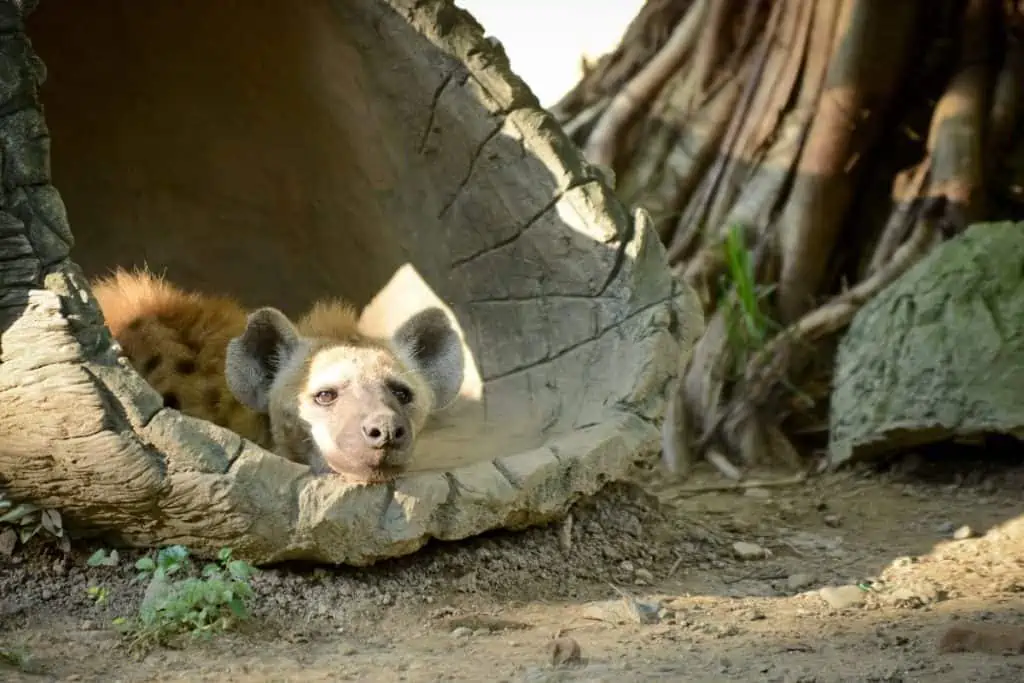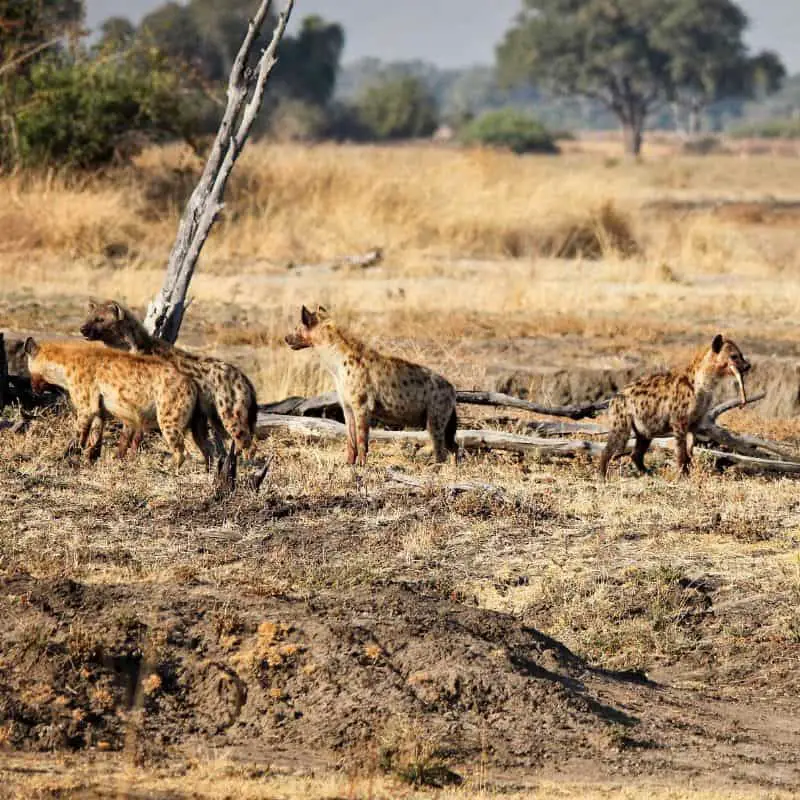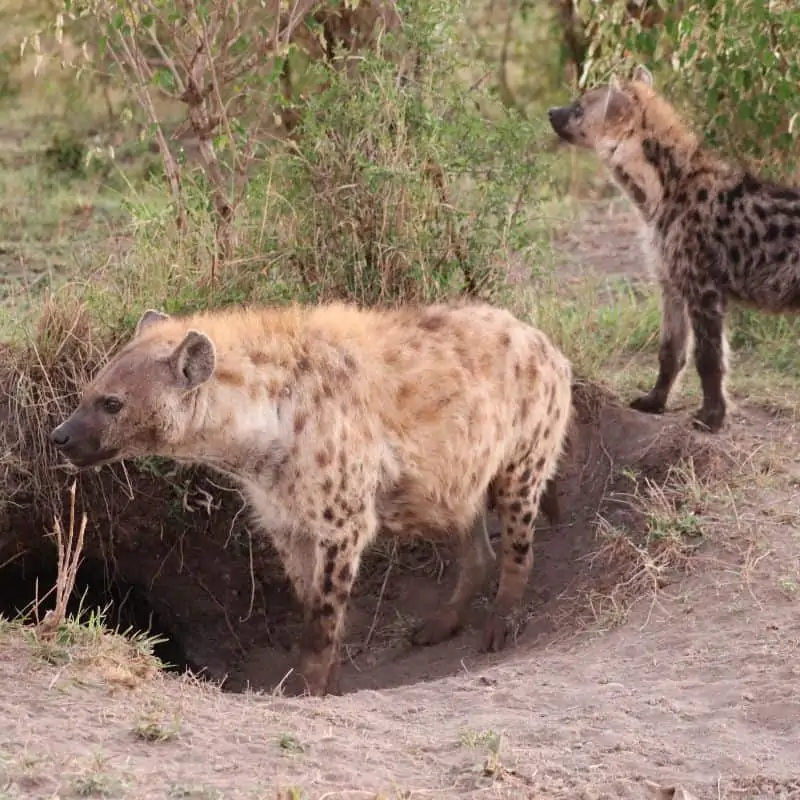Hyenas are an extraordinary animal species with a unique and mysterious appearance that has fascinated people for centuries. If you want to see one in the wild, where do these animals live?
Hyenas are found mainly in sub-Saharan Africa but also inhabit parts of the Middle East and India. They live in savannas, grasslands, sub-deserts, montane forests, and bushlands. Hyenas can adapt to a variety of habitats and can even thrive in human-dominated areas such as near garbage dumps. Hyenas live in small family groups and form large clans with complex social structures.
Hyenas are a fascinating and often misunderstood species of animals. In this article, we’ll explore the different species of hyenas and discuss where they can be found in the wild.

- Where Are They Found Geographically?
- What Habitats Do Hyenas Live In?
- Where Do the Different Species of Hyenas Live?
- Do Hyenas Live in a Den?
- What Other Species Do Hyenas Share Their Habitats With?
- What Factors Pose a Risk to Hyena Habitats?
- What Measures Can Be Taken To Protect Hyena Habitats?
- Final Thoughts Hyena Habitats
Where Are They Found Geographically?
Hyenas are a species of carnivorous mammals found in Africa, the Middle East, and India.
They belong to the family Hyaenidae, which includes four species, spotted hyena, brown hyena, striped hyena (Hyaena hyaena), and Aardwolf.
Hyenas are known for their scavenging habits as well as their powerful jaws.
Hyenas typically live in groups called clans and can have territories ranging from a few hundred meters to several kilometers.
They are primarily active at night but may also be active during the day, depending on their habitat and prey availability.
Hyenas have an impressive social structure and advanced communication skills.

What Habitats Do Hyenas Live In?
Hyenas are carnivorous mammals found in many parts of the world. Though they are often associated with savanna and desert habitats, hyenas can be found living in a variety of different ecosystems.
- Savanna
- Deserts and Semi-deserts
- High Mountains
- Woodlands and Forests
- Urban Areas
- Coastal Areas
- Grasslands and Scrublands
Where Do the Different Species of Hyenas Live?
Each species of hyena lives in a different environment, from deserts and grasslands to forests.
Let’s take a closer look at where each species of hyena calls home.
Spotted Hyena
The spotted hyena is the most common species of hyena, and it can be found in sub-Saharan Africa.
They prefer grassy plains, savannas, and open woodlands, but they have also ventured into rocky hillsides and mountainous areas.
Brown Hyena
The brown hyena lives mostly in desert regions of southern Africa, including parts of Namibia and South Africa.
They can also be found in more fertile African areas, like grasslands and coastal scrublands.
Striped Hyena
The striped hyena is the least common species of hyena, and it lives primarily in Middle East India and Northern Africa.
They inhabit semi-deserts, rocky scrublands, and savannas.
Aardwolf Hyena
The aardwolf is the smallest species of hyena and can be found in grasslands, woodlands, and savannas across Eastern and Southern Africa.
They favor open spaces that offer plenty of insects for them to feed on. They live in underground burrows which they make by themselves.
Do Hyenas Live in a Den?
Hyenas do not typically make use of dens for long-term residence, instead preferring to inhabit grassy or shrubby habitats near water sources.
During the day, they rest in small depressions beneath bushes and trees, while at night, they may take refuge in rock crevices, protecting them from potential predators.
Since hyenas are opportunistic hunters, their home ranges are dependent on the availability of food in their environment.
Hyenas prefer dry grasslands with few trees and use caves, underground tunnels, or burrows for shelter.

What Other Species Do Hyenas Share Their Habitats With?
Hyenas share their habitats with many species, including zebras, wildebeests, gazelles, antelopes, giraffes, rhinoceroses, and warthogs.
They coexist with other predators like lions, leopards, and cheetahs too.
They have even been known to enter human settlements searching for food, which can lead to conflict with people.
Despite this, they remain one of the most widespread carnivores on Earth.
What Factors Pose a Risk to Hyena Habitats?
Habitat loss, and degradation are some of the biggest threats facing hyena populations worldwide.
Here is an overview of the main risks posed to hyena habitats:
Human Encroachment
Humans have had a major impact on the habitats of hyenas through activities such as deforestation, hunting and poaching, land conversion for development and infrastructure projects, and pollution.
These activities have resulted in the loss of suitable habitat for hyena populations and can lead to local extinctions.
Climate Change
Climate change has been linked to a decrease in prey availability and increased weather extremes, resulting in reduced food sources for hyenas.
This can lead to increased competition between species, as well as decreased access to safe breeding grounds.
As climate change continues to cause environmental shifts, hyena habitats will continue to be threatened.
Natural Disasters
Natural disasters, such as floods and droughts, can hurt hyena habitats. These events can destroy their homes, leaving them vulnerable to predation and disease.
In addition, they can also disrupt the availability of food sources, resulting in decreased nutrition and an increase in competition between species for resources.
As climate change intensifies, the risk of natural disasters is likely to increase, posing a threat to hyena habitats and populations.
Invasive Species
Invasive species can also pose a threat to hyena habitats. These species are often introduced by humans and can out-compete native species for food, water, and shelter.
They can also alter habitat structure, leading to a decrease in suitable areas for hyenas to live in.
Invasive species have the potential to disrupt the delicate balance of an ecosystem, increasing the risk of extinction for hyenas.
What Measures Can Be Taken To Protect Hyena Habitats?
Hyenas are an important part of African ecosystems, and their habitats must be protected.
To ensure the safety of these habitats, several steps can be taken.
- Governments and local authorities must work together to develop conservation strategies that protect hyenas’ habitats. This could include protecting land from development and enforcing laws against poaching or other activities threatening hyenas.
- Communities must be aware of the importance of protecting hyenas and their habitats. Awareness campaigns and education programs can help spread the message that hyenas are an important part of ecosystems and that their habitats must be preserved.
- Governments should provide funding for conservation efforts. Financial assistance can help support research projects and other initiatives that protect hyena habitats. By investing in these efforts, we can ensure the future of this species and its habitats.
Final Thoughts Hyena Habitats
Hyenas can be found across Sub-Saharan Africa, North Africa, and parts of the Middle East.
They inhabit various habitats, including grasslands, savannas, woodlands, scrubland, mountains, and semi-deserts.
Unfortunately, these habitats are increasingly threatened by deforestation, climate change, and other activities that put hyenas in danger.
Without concerted efforts to protect and conserve hyena habitats, their future is uncertain.

